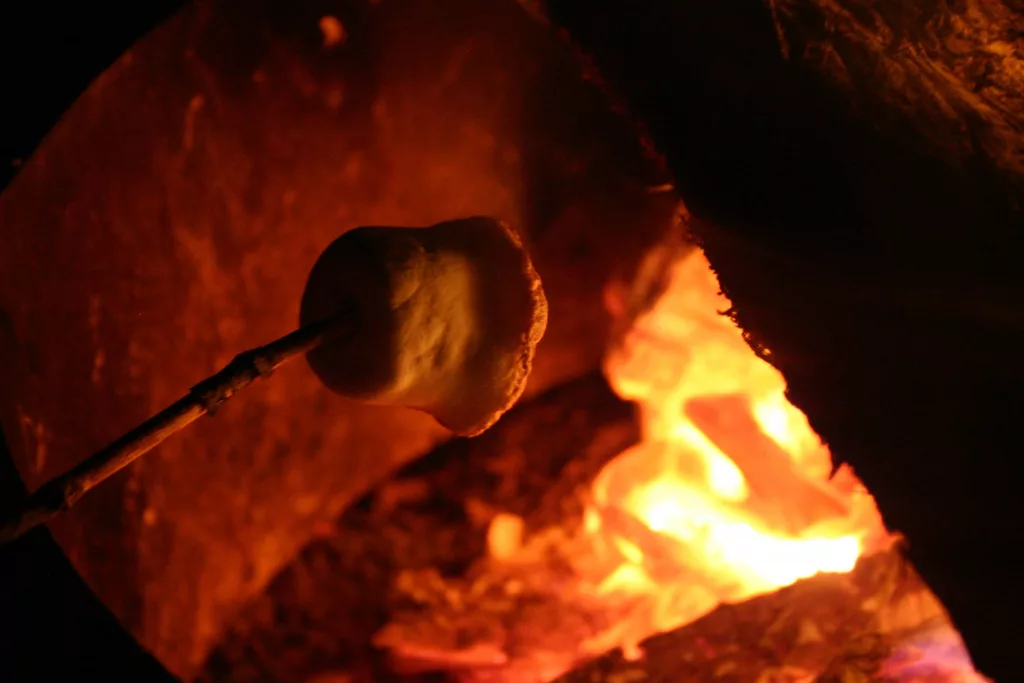Gathering around the campfire is a highlight for many visitors at Oregon State Parks. If you follow some basic guidelines, you can enjoy this tradition safely and reduce the risk of injury and wildfires.
Wildfire is a real danger in Oregon despite the wet and snowy spring. That’s why the No. 1 precaution you can take is to follow posted fire restrictions. At times, campfires and other open flames may be banned in campgrounds or on the beach.
Restrictions can happen at any time and with little warning, depending on conditions. Be sure to research conditions for the area near where you’re camping just before you head out. Fire restrictions may be in place at the park, county or state level. The Oregon State Parks website will post the latest information about campfires in state parks.
Restrictions may be in place even though the park is far from any wildfires. When wildfires rage, emergency responders and firefighters need to be on the front lines. We ask campers to do their part to make sure an emergency at the campground doesn’t pull resources from the statewide firefighting effort.
“If you’re camping with children or others who are new to outdoor recreation, it’s particularly important to review campfire safety practices,” said Chris Havel, Oregon Parks and Recreation Department (OPRD) associate director. “If you have a question or a concern, talk with a park ranger or camp host.”
OPRD offers these six tips for a safe and enjoyable campfire:
- Maintain campfire flames at knee height (no more than 2 feet high). A smaller flame helps prevent embers from rising into the trees or dry vegetation. If you see the wind stirring up embers, play it safe and put the fire out.
- In a state park campground, only build campfires in the existing fire ring in your campsite. Fire rings are placed in areas with buffer zones and away from vegetation.
- Always keep plenty of water on hand to safely put out the campfire. Douse the flames with water and stir the embers to make sure everything is wet. The stirring step is important: ash and wood debris often maintain heat. Repeat these steps until the fire no longer emits heat.
- Beach campfires should be on open sand and away from driftwood or vegetation and use only natural wood, rather than pallets or anything else that might have hidden nails or screws. Slowly pour water on your beach fire to put it out. Pouring water too quickly can cause hot sand to fly up. Don’t use sand to put out a beach fire. Covering the fire with sand will insulate the coals, keeping them hot enough to burn someone hours or days later.
- For propane fire rings, follow the same safety precautions you would with a log-based campfire. The use of propane fire rings may be restricted depending on local conditions.
- Make sure everyone in your campsite is familiar with campfire safety, including children. Always keep an eye on your campfire; many accidental fires are started because campers left their fire unattended for “just a minute.”
In addition to keeping your campfire safe, it’s also important to make sure your wood is free from invasive insects to keep our forests safe from the deadly emerald ash borer and other pests. Please do not bring firewood from outside the local area. Buy local firewood within 10 miles of your destination or buy certified heat-treated firewood.
During May, the Oregon Department of Forestry, the Oregon Office of State Fire Marshal, the Office of Emergency Management, Keep Oregon Green, the U.S. Forest Service, OPRD and other federal, state and local emergency and response agencies are encouraging the public to work together in their local communities to prevent the risk of wildfire.
Information about recreation and wildfire safety is at keeporegongreen.org. Visit stateparks.oregon.gov for information about Oregon State Parks including fire restrictions and safety guidelines.





